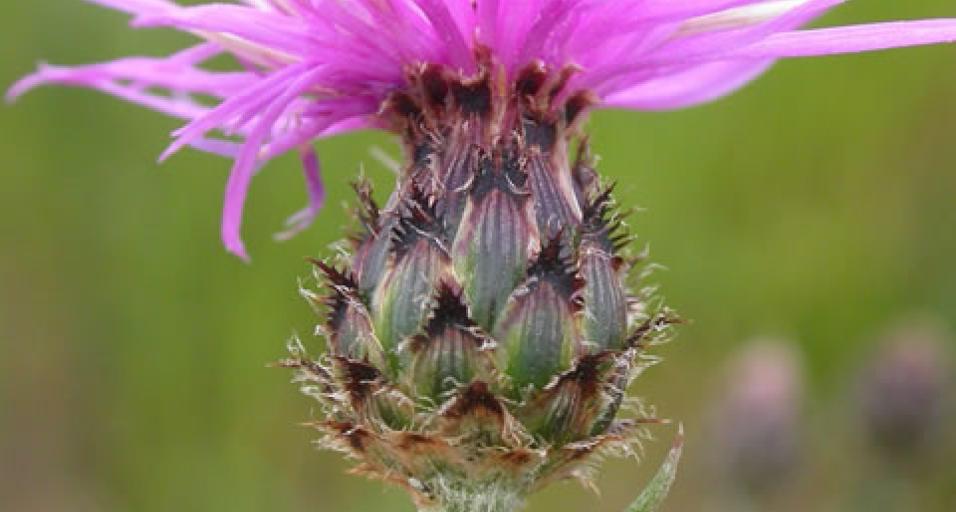Wyoming Game and Fish Department in partnership with the University of Wyoming recently initiated a long term study on the Yellowtail Wildlife Habitat Management Area near Lovell to determine the effectiveness of repeated grazing by goats as a control method for Russian knapweed. Control with targeted grazing using sheep or goats has shown some promise.
Knapweeds are a large group of thistle-like invasive plants that include over 400 species within the genus Centaurea. Most knapweeds originated in Eurasia and were accidentally introduced to North America via contaminated alfalfa seed in the late 1800’s. The most common in Wyoming are spotted knapweed (Centaurea stoebe), diffuse knapweed (Centaurea diffusa), and Russian knapweed (Centaurea repens). Spotted and diffuse knapweed are generally biennials or short-lived perennials, while Russian knapweed is a long-lived perennial.
Plants begin their life as a short basal rosette with deeply lobed leaves. In the case of spotted and diffused knapweeds the plant will stay in the rosette stage for the first year, then bolt and produce pink or lavender flowers the second year. These two species reproduce solely by seed and can produce up to 25,000 seeds from a single plant. Russian knapweed is unique in that it reproduces primarily through spreading roots. Roots from a single plant can cover 14 square yards and penetrate over 20 feet deep by the second growing season.
Knapweeds provide little forage value for most wildlife and drastically reduce diversity, making it one of the most concerning invasive plants from a wildlife habitat perspective. Knapweeds typically invade disturbed areas such as roadsides, waste areas and pastures. Once established, however, the colony can invade undisturbed areas. Knapweeds are one of the most ecologically destructive invasive plants because of their ability to form large, dense stands that completely eliminate native vegetation. Their competitive nature is partly explained by the production of allelopathic chemicals, biochemicals that inhibit the growth of other plants.
Because of the prolific seed production and long-term seed viability of spotted and diffuse knapweeds and the deep, persistent root system in Russian knapweed, control of knapweeds can be challenging. Typically, a single control method is not effective, whereas an integrated management strategy which includes cultural, chemical and mechanical methods can produce good results. As with most invasive plants, early control before plant populations are well established is much more effective than trying to tackle a well-established monoculture. Small infestations can be successfully eradicated through hand-pulling or herbicide treatments.
One of the most effective control methods is a fall application of the herbicide Aminopyralid (Milestone®) at a rate of 5-7 ounces per acre. At this rate, aminopyralid is very effective on all knapweeds and injury to grasses is minimal. Injury to other broadleaf plants and shrubs is species dependent.
----
By Jerry Altermatt, Game and Fish Terrestrial Habitat Coordinator in the Cody region
Study on goat grazing to control Knapweed begins
Wyoming Game and Fish (307) 777-4600

